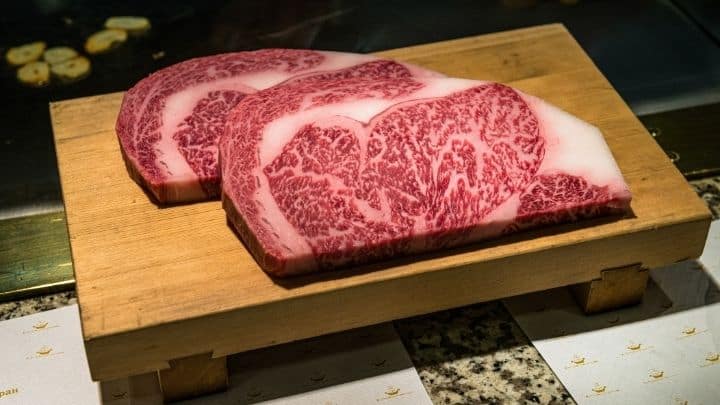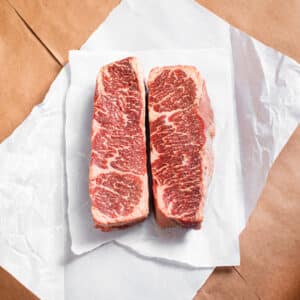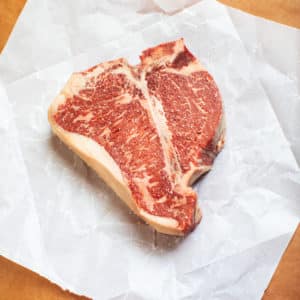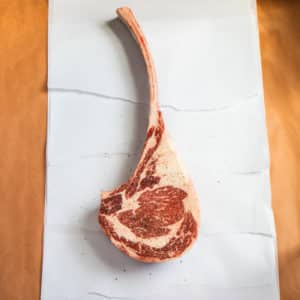
To untrained eyes and ears, attempting to unscramble and understand the jumble of letters and words that make up the grading scale of the meat in your local meat market or grocery store is an exercise in futility. Interspersed amongst adjectives such as “grass-fed,” “free-range,” and “organic” that tell you nothing about the quality of the product are words such as “prime,” “choice,” and “select” to add to your hesitation. But somewhere in this tangle of descriptors most find only marginally helpful, you can find the answers to all your questions on the caliber of meat.
While some meat processors may attempt to absolve themselves of product quality disclosure with clever marketing terms, reputable suppliers and sellers will freely communicate this information. This is why it’s important for shoppers to learn about the different quality grades of beef.
In the meat world, the ultimate authority in America is a government organization called the United States Department of Agriculture (USDA). This powerful department is responsible for implementing policy and providing leadership on food, agriculture, nutrition, and other resources. This authority is based on scientific studies and uses the best information to craft sound public.
Be sure to look for both the circular USDA “Inspected” and “Meat Grade Shield” labels when making your selection. Included in this grading process and inspection is a check for various physical markers on the animal. Each of these characteristics can impact the flavor, and the grade that the product receives will also be indicative of that. Going through the USDA inspection process ensures that the product you are buying is safe for cooking and eating.
Beef is graded and marked into one of eight different categories labeling the quality of the meat. The quality grade for beef is partially based on the marbling distribution in the ribeye. Marbling is the white flecks of intramuscular fat present in each slice of meat and is responsible for flavoring the meat. The meat typically receives a higher grade when there are higher amounts of marbling present. This is achieved by slicing the beef between the 12th and 13th ribs to create a clear view for the inspection. The animal’s age or maturity are also considered during the grading process.
In the past, this inspection of the cattle was performed by an individual grader who was onsite. Today, the process has become mostly automated, performed by advanced video imaging analysis. The grading is a part of the inspection that also includes ensuring proper food safety standards are followed, and that proper sanitation methods were observed. This inspection is available only after passing a federal inspection with a multi-part checklist.
Only the best of the best receive the prized USDA Prime grade. This is the top distinction available and a difficult standard to achieve. Prime cattle are typically younger, having been fed very well during their lifetime. This produces an abundance of flavor thanks to the excess marbling.
Slices of meat graded Prime are like those found in top-quality steak houses, fine dining establishments, and butcher shops. The good news for consumers is that improvements in the process promise to allow producers to generate more higher-quality meat, especially Prime grade.
Meat that is Choice grade represents the majority of what passes through the inspection process. This is also what consumers are most likely to find when they check the shelves at their local grocery store. The meat still has a moderate amount of marbling; it just doesn’t quite reach the standards of Prime.
The great thing about Choice beef is the amount of flavor that is already there, and this can be further enhanced based on different preparation methods. This lets the typical home chefs create a meal that tastes as delicious as any world-class restaurant, only on a budget.
Select grade meat has little of the marbling found in higher grades. It is typically a leaner yet very dense piece of meat, which can be tough, less flavorful, and less juicy. But there are methods of preparation for select meat to add flavor back to your meal, including marinating or braising. Select grade meat is also great on the grill, thanks to the speed of cooking. Some resellers will use Select meat in their house brand due to the lower cost.
Lower lone scale, but still occasionally seen in some grocery stores, is beef graded Standard or Commercial. Both of these are likely to be marked ungraded and might be sold as the store brand.
Standard grade is the one immediately following Select. This beef is of an even lower quality, with less marbling as a result. The one big upside is how economic cuts of Standard beef can be.
Commercial is lower still, with poor quality meat possessing little tenderness and flavor. Commercial grade meat is typically produced by older animals, well past their prime.
Representing a minuscule amount of graded meat are Utility, Cutter, and Canner grades. This meat is also usually produced from older animals. It is commonly found in cheap ground beef, canned meats, and processed meals.
The USDA isn’t just responsible for maintaining the different quality grades of beef. Many other sources of meat are also subject to similar inspection standards.
With grades of A, B, and C available, chickens are one of the items most likely to go through inspections before reaching your favorite meat market. A is the highest quality and most likely to be found in stores, while those graded B and C are likely to end up processed in some other way.
The USDA has a different grading process for Pork than other animals. Pork is judged based on the back fat thickness and the muscling present in the carcass.
Lambs also have a different grading scale than beef. Lamb is based upon the age, carcass muscling, and color, among a handful of other criteria. There are five possible grades available for lamb: Prime, Choice, Good, Utility, and Cull.
One of the biggest benefits to adding a stop at the butcher shop in place of your grocery store’s meat counter is the ability to talk and ask questions to a professional devoted to the craft of meat carving. At Vincent’s Meat Market in The Bronx, we take pride in helping all of our customers have a USDA Prime grade shopping experience.





Fast Support! Text us:
